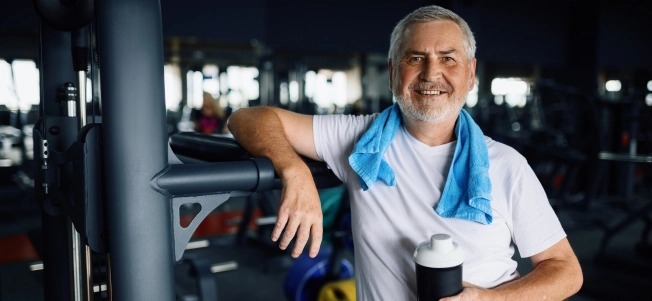Mobility and Strength Maintenance as You Age: Simple Habits That Make a Big Difference

Staying strong and mobile doesn’t have to be complicated, but it does get more important as you get older. If you’ve ever felt stiffer than you used to, noticed it takes longer to recover from simple tasks, or you’ve started avoiding certain movements altogether, you’re not alone.
The natural aging process affects muscles, joints, and balance—but that doesn’t mean you’re stuck with decline. With a few consistent habits, mobility and strength maintenance as you age can be both simple and effective.
Let’s look at what really helps your body stay strong, flexible, and capable over time—and how to start making small changes that add up.
Why Mobility and Strength Decline With Age
Starting around age 30, most people begin to lose muscle mass gradually—a process called sarcopenia. After 40, this loss can speed up, especially if we’re inactive. Joints can become less flexible, and balance may start to weaken, making everyday movements like bending, reaching, or getting up from the floor feel harder than they used to.
According to the National Institute on Aging, regular physical activity is one of the best ways to slow or even reverse age-related physical decline. Strength training and balance exercises are especially helpful for staying independent and preventing injury.
The Importance of Mobility and Strength Maintenance as You Age
Mobility is about being able to move your body easily and comfortably through everyday tasks. Strength is what helps you lift, carry, and support your body as you move. When you maintain both, you:
Reduce your risk of falls and injuries
Protect your joints and bones
Maintain independence in daily life
Support your metabolism and overall energy
Stay active in the activities you love—whether that’s gardening, walking, or playing with grandkids
The key is doing a little bit often—not doing everything all at once.
How to Support Mobility and Strength Maintenance as You Age
Here are some practical, manageable ways to stay strong and mobile in your 40s, 50s, and beyond:
1. Make Strength Training a Weekly Habit
You don’t need a gym or heavy weights. Bodyweight exercises like squats, wall push-ups, and step-ups are a great place to start. Resistance bands or light dumbbells also work well. Aim for strength training 2 to 3 times per week, focusing on all major muscle groups.
2. Stretch Gently, But Regularly
Flexibility decreases with age, but simple daily stretching or gentle yoga can help keep joints healthy. Focus on areas that tend to get tight: hips, hamstrings, lower back, and shoulders.
3. Prioritize Balance and Stability
Incorporate balance exercises into your routine. Try standing on one foot, heel-to-toe walking, or using a balance board. This reduces the risk of falls and strengthens small stabilizer muscles often overlooked in regular workouts.
4. Walk More
Walking is low-impact, easy to start, and great for both mobility and strength. If you can, aim for at least 30 minutes a day, even if it’s broken up into smaller chunks.
5. Recover With Care
Rest and recovery matter more as you age. Make sure you get enough sleep, stay hydrated, and listen to your body. Gentle movement is often better than complete rest when you’re sore or stiff.
What to Watch For as You Age
It’s normal to notice some changes, but there are a few red flags to keep an eye on:
Loss of grip strength
Difficulty getting up from a chair or bed
Feeling unstable when walking or turning
Chronic joint pain or stiffness
If these show up, it’s a good time to check in with your doctor or physical therapist. Early support can make a big difference in how your body feels long-term.
The Takeaway: Small Daily Movements Add Up
You don’t need an intense fitness plan or perfect routine to stay strong. The secret to mobility and strength maintenance as you age is consistency. Move your body a little every day. Keep it simple. Stay curious about how you feel—and stay flexible with how you approach it.
Your future self will thank you.
Want more practical tips for staying strong, mobile, and well as you age?
Visit the Healthy Body section for more articles, movement ideas, and real-world advice to help you live well—at every stage of life.
